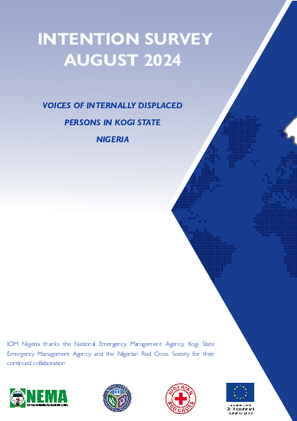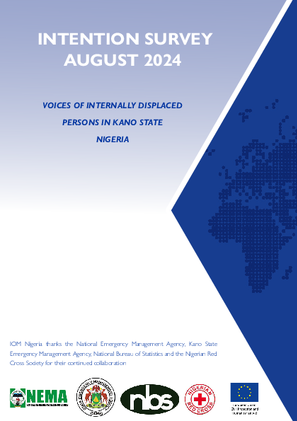-
Countries
-
Data and Analysis
-
Special Focus
-
Crisis Responses
Internal displacement
Domain host
displacement.iom.int

Contact
DTMCostaRica
Language
Spanish
Location
Costa Rica
Period Covered
Oct 01 2024
Oct 31 2024
Activity
- Survey
- Registration
- Flow Monitoring
Cantones La Cruz, Upala y Los Chiles
Los movimientos migratorios de personas nicaragüenses hacia Costa Rica son una tendencia constante en América Central, intensificándose por factores políticos, económicos y sociales.
Entre enero y octubre del 2024, se registraron 455.554 movimientos regulares de personas de nacionalidad nicaragüense (52% ingresos, 48% egresos). En el mismo periodo durante el 2023 se registraron 419.925 movimientos regulares (52 % ingresos y 48 % egresos). Esto representó un aumento del 8% en el 2024 con respecto al 2023. Por otro lado, por puntos fronterizos no oficiales, se han registrado 77.110 movimientos migratorios desde el 15 de mayo del 2024 hasta el 30 de septiembre, siendo el 51% egresos y el 49% ingresos.
Además, se encuestaron a 306 personas nicaragüenses (169 en puestos fronterizos oficiales y 137 en cruces fronterizos no oficiales) y 238 acompañantes (53 por puestos fronterizos oficiales y 185 por cruces fronterizos no oficiales).
Entender la dinámica fronteriza de quienes la transitan es fundamental en la comprensión de las necesidades de población migrante y la formulación de propuestas para su atención. Ante estos desafíos, es esencial disponer de información actualizada sobre el perfil sociodemográfico, motivos de migración, necesidades y la dinámica de los movimientos migratorios de persona nicaragüenses en la frontera norte de Costa Rica.

Contact
DTMCostaRica@iom.int
Language
English
Location
Costa Rica
Period Covered
Oct 01 2024
Oct 31 2024
Activity
- Survey
- Registration
- Flow Monitoring
Cantons: La Cruz, Upala and Los Chiles
The migratory movements of Nicaraguan people to Costa Rica are a constant trend in Central America, intensified by political, economic, and social factors.
Between January and October 2024, there were 455,554 regular movements of people of Nicaraguan nationality (52% entries, 48% exits). In the same period in 2023, 419,925 regular movements were recorded (52% entries and 48% exits), representing a 8% increase in 2024 compared to 2023. On the other hand, through unofficial border points, 77,110 migration movements were recorded from May 15, 2024, to September 30, with 51% being exits and 49% entries.
Additionally, during October, 306 Nicaraguan individuals were surveyed (169 at official border points and 137 at unofficial border crossings), along with 238 companions (53 at official border points and 185 at unofficial border crossings).
Understanding the border dynamics of those who transit it is essential in comprehending the needs of the migrant population and formulating proposals for their assistance. In the face of these challenges, it is essential to have updated information on the sociodemographic profile, reasons for migration, needs, and the dynamics of the migratory movements of Nicaraguan people on the northern border of Costa Rica.

Contact
iomnigeriadtm@iom.int
Language
English
Location
Nigeria
Period Covered
May 15 2024
Jun 11 2024
Activity
- Survey
- Return Intention
To ascertain the future intentions and aspirations of the IDPs in Katsina State, the DTM surveyed 33 LGAs where IDPs were situated. Out of the 32,281 displaced households in the state, 3,587 were interviewed. Among the households interviewed, two per cent of the respondents resided in camps and camp-like settings, while 98 per cent resided in host communities.

Contact
DTM Nigeria, iomnigeriadtm@iom.int
Language
English
Location
Nigeria
Period Covered
Apr 15 2024
May 11 2024
Activity
- Survey
- Return Intention
The issue of internal displacement in north-west and north-central Nigeria has persisted for over a decade, with a significant population of 1,092,196 people remaining displaced for extended periods. Many of these internally displaced persons (IDPs) still wish to return to their places of origin, stay in their current locations, or relocate to new areas. To better understand the IDPs' preferred durable solutions—whether voluntary return, local integration, or relocation—the Dis-placement Tracking Matrix (DTM) conducted the Intention Survey (IS). This survey was carried out between April and June 2024, targeting 17,833 internally displaced households across 181 Local Government Areas (LGAs) and 794 wards in ten states in north-west and north-central Nigeria: Benue, Kaduna, Kano, Katsina, Kogi, Nasarawa, Niger, Plateau, Sokoto, and Zamfara.
The survey aimed to highlight the aspirations of IDPs regarding their preferred durable solutions over the next 12 months, thereby supporting evidence-based decision-making, policy development, and program planning. A durable solution is achieved when IDPs no longer require specific assistance and protection due to their displacement and can enjoy their rights without discrimination. The survey assessed intentions such as 'return to the place of origin,' 'integrate into the current location,' or 'relocate to a new location' as indicators of the IDPs' preferred solutions.

Contact
DTM Nigeria, iomnigeriadtm@iom.int
Language
English
Location
Nigeria
Period Covered
Apr 15 2024
May 11 2024
Activity
- Survey
- Return Intention
To gain insight into the future intentions and aspirations of the IDPs in Plateau State, the DTM surveyed 15 LGAs where IDPs have been located. Out of the total 9,272 displaced households in the state, a sample of 1,326 was interviewed. Of these households, two per cent were residing in camps or camp-like settings, while the overwhelming majority, 98 per cent, were residing within host communities.

Contact
DTM Nigeria, iomnigeriadtm@iom.int
Language
English
Location
Nigeria
Period Covered
Apr 15 2024
May 11 2024
Activity
- Survey
- Return Intention
To discern the future aspirations and intentions of IDPs in Nasarawa State, the DTM surveyed thirteen (13) LGAs where IDPs were situated. Out of the total 3,989 displaced households in the state, a sample of 660 were interviewed. Of these households, 10 per cent were found to reside in camps or camp-like settings, while the overwhelming majority, 90 per cent, resided within host communities.

Contact
iomnigeriadtm@iom.int
Language
English
Location
Nigeria
Period Covered
Apr 15 2024
May 11 2024
Activity
- Survey
- Return Intention
To understand the future intentions and aspirations of IDPs in Kogi State, DTM surveyed eight (8) LGAs where IDPs were situated. Out of the 1,944 displaced households in the state, 209 were sampled and interviewed. Among the households interviewed, 33 per cent resided in camps or camp-like settings, while the remaining 67 per cent resided in host communities.

Contact
DTM Nigeria, iomnigeriadtm@iom.int
Language
English
Location
Nigeria
Period Covered
Apr 15 2024
May 11 2024
Activity
- Survey
- Return Intention
To understand the future intentions and aspirations of IDPs in Niger State, DTM surveyed 13 LGAs where IDPs were situated. Out of the total 3,447 displaced households in the state, 532 households were sampled and interviewed. Among the households interviewed, five per cent resided in camps or camp-like settings, while the remaining 95 per cent, resided in host communities.

Contact
DTM Nigeria, iomnigeriadtm@iom.int
Language
English
Location
Nigeria
Period Covered
Apr 15 2024
May 11 2024
Activity
- Survey
- Return Intention
To ascertain the future intentions and aspirations of the IDPs in Sokoto State, the DTM surveyed 21 LGAs where IDPs were situated. Out of the 17,454 displaced households in the state, 2,317 were interviewed. Among the households interviewed, 17 per cent were situated in camps and camp-like settings, while the remaining 83 per cent were settled in host communities.

Contact
iomnigeriadtm@iom.int
Language
English
Location
Nigeria
Period Covered
Apr 15 2024
Jun 11 2024
Activity
- Survey
- Return Intention
To ascertain the future intentions and aspirations of the IDPs in Kano State, the DTM surveyed 32 LGAs where IDPs were situated. Out of the 2,642 displaced households in the state, 512 were sampled and interviewed. Among the households interviewed, two per cent of households were situated in camps or camp-like settings, while 98 per cent were residing in host communities.
Pagination
- Previous page
- Page 3
- Next page
